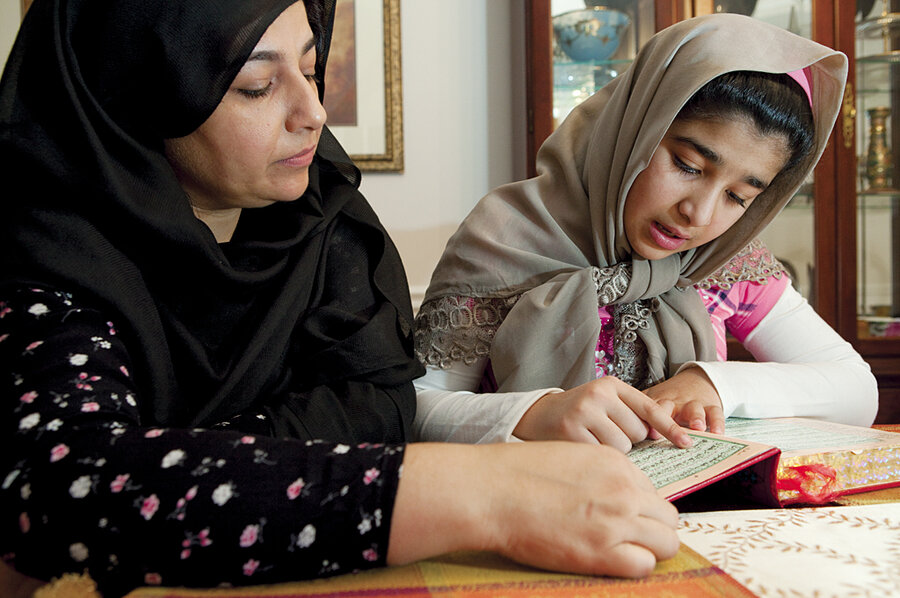Reading the Quran in a new way
Loading...
Carl Ernst has read, parsed, and puzzled over the Quran since graduate school in 1975. As in the Bible, some passages are mild, some blistering. Later ones appear to cancel out earlier ones. Which has precedence?
Now a specialist in Islamic studies at the University of North Carolina at Chapel Hill, Professor Ernst had an epiphany when he encountered an ancient literary technique known as “ring composition.”
We read books first page to last. But before cover-to-cover reads, there were scrolls, and before scrolls, there was oral storytelling. Many older works, Ernst learned from a scholar of Hindi-language Sufi texts, were not composed in a straight-line manner. Instead, the first line of a passage would be mirrored by the last line, the second by the second to last, and so on. At the center of the passage was where the key statement sat.
Why would anyone compose a story that way? In oral storytelling, Ernst says, people had to memorize huge amounts of material. They used mnemonic devices. A famous one is the “memory palace,” in which a storyteller mentally walks through a palace, each room helping him recall part of the story. That could have influenced where the most important spot would be – perhaps in the palace’s center.
In early written literature, scrolls were common. The ends of a scroll roll up. The center is the sweet spot. So ring composition was natural in the prebook era. Parts of “The Iliad” and parts of the Bible (Leviticus, in particular) appear to use this structure.
A few years ago, Ernst began looking for ring composition in the Quran. “That was my eureka moment,” he says.
Take Sura 60. Verses at the beginning and end deal with Abraham’s battle with idol worshipers. But here’s the center: “Perhaps it may be possible for God to create affection between you and your enemies.” That seems to call for tolerance and mercy.
Sura 5 also contains a surprise. At its center: “For everyone, We have established a law and a way. If God had wished He would have made you a single community. But this was so He might test you regarding what He sent you. So try to be first in doing what is best.” That seems to endorse religious pluralism.
“This is not an illusion,” Ernst says. “The same words or related words appear at the beginning and end of the suras.”
Ernst’s 2011 book “How to Read the Qur’an” explores the intriguing idea that ring composition, common in Muhammad’s day, can shed light on a book revered by more than 1 billion people and at the center of one of humanity’s most troubling conflicts. Hearts and minds won’t change overnight. But the Quran may eventually be viewed very differently.








